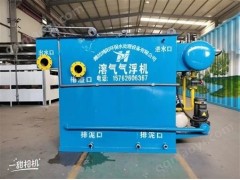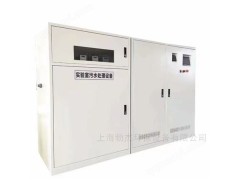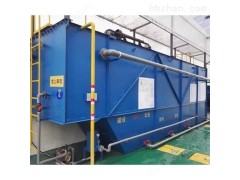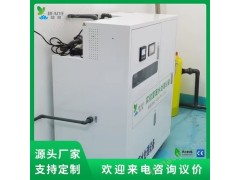Product Details
>Basic wastewater treatment process in the printing and dyeing industry
Printing and dyeing wastewater mainly consists of desizing wastewater, scouring wastewater, bleaching wastewater, mercerizing wastewater, dyeing wastewater and printing wastewater. The four processes of printing and dyeing processing must discharge wastewater in the pretreatment stage (including desizing and scouring wastewater). Bleaching, mercerizing and other processes) will discharge desizing wastewater, boiling wastewater, bleaching wastewater and mercerizing wastewater, dyeing process will discharge dyeing wastewater, printing process will discharge printing wastewater and soap wastewater, and finishing process will discharge finishing wastewater. Generally speaking, printing and dyeing wastewater is the mixed wastewater of the above types of wastewater or the comprehensive wastewater except bleaching wastewater.
Biological adsorption
Generally, the activated sludge action is divided into three steps. The first step is to rapidly reduce the organic matter content in the water through agglomeration adsorption and absorption in the early stage of contact between activated sludge and wastewater. The second step is activated sludge. The oxidative decomposition of organic matter by mud is used to grow bacteria and maintain the metabolism of microorganisms. The third step is precipitation and separation. The first step is the result of physical, chemical and biological effects. The comprehensive effect of this process, agglomeration, adsorption and absorption, is called biosorption.
Characteristics of biosorption
) A large number of bacteria survive in the biosorption section, and they continue to reproduce and adapt to processes such as elimination and optimization, so that a microbial population with strong adaptability and activity can be cultivated. This process does not require The primary sedimentation tank allows all microorganisms in the original wastewater to enter the system, making the adsorption regeneration section an open biodynamic system.
) The higher load in the biosorption section is conducive to the growth and reproduction of microorganisms with a fast proliferation rate, and only prokaryotic bacteria with strong impact resistance can survive here, and other microorganisms cannot survive.
) The biodegradability of wastewater after treatment in the biosorption section is greatly improved, which is beneficial to the work of subsequent treatment units.
) The biosorption section has a high sludge yield and strong adsorption capacity. Heavy metals and refractory substances can be removed through the adsorption of sludge.
) The removal of organic matter in the biosorption section mainly relies on the adsorption of sludge flocs. Biodegradation only accounts for about one-third. Since physical and chemical effects play a dominant role, the adsorption section has no effect on toxicant load and temperature changes. Have strong adaptability.
Enhanced biosorption pretreatment
Both coagulation and sedimentation and biosorption pretreatment methods are effective, but the dosage of coagulation and precipitation is large, the workload is large, and the operation is complex, and the dosage of biosorption is The less treatment effect is better, so according to the characteristics of relatively high concentration of printing and dyeing wastewater, we propose an enhanced biosorption method, that is, biosorption combined with coagulation sedimentation, as a pretreatment method. The strong adsorption effect of sludge flocs is used to adsorb pollutants and refractory substances in wastewater, and a certain amount of coagulation agent is added for coagulation reaction. After the reaction, the mixed liquid enters the adsorption sedimentation tank for precipitation and separation. On the one hand, this can reduce the dosage of coagulation agent and reduce operating costs; on the other hand, it can reduce the total amount of sludge generated in the treatment process and reduce treatment costs.
Disclaimer
The information/pictures/parameters, etc. displayed on this webpage about【Basic processes for wastewater treatment in the printing and dyeing industry】are provided by member【Hebei Jisheng Environmental Engineering Co
】,By Titker Trade Network members 【Hebei Jisheng Environmental Engineering Co
】is solely responsible for the authenticity, accuracy and legality of the information/pictures/parameters, etc.,Titker Trade Network only provides display services. For your safety, please choose Titker Trade Network for online trading, otherwise Titker Trade Network will not bear any responsibility for this.
If your legitimate rights and interests have been infringed, please contact Titker Trade Network customer service as soon as possible. We will serve you wholeheartedly. Thank you for your attention and support to Titker Trade Network!






 Small integrated lab¥1000.00/
Small integrated lab¥1000.00/
 Dissolved air flotat¥1100.00/
Dissolved air flotat¥1100.00/
 Industrial wastewate¥1000000.00/
Industrial wastewate¥1000000.00/
 Wholesale of domesti¥10000.00/
Wholesale of domesti¥10000.00/
 Which is the best di¥10000.00/
Which is the best di¥10000.00/
 Small integrated lab¥10000.00/
Small integrated lab¥10000.00/
 Gongcheng County Cle¥1.00/
Gongcheng County Cle¥1.00/
 Diet during lung canNegotiable
Diet during lung canNegotiable
 13977352226 Guilin c¥1.00/
13977352226 Guilin c¥1.00/



 Year1
Year1




 WhatsApp
WhatsApp





